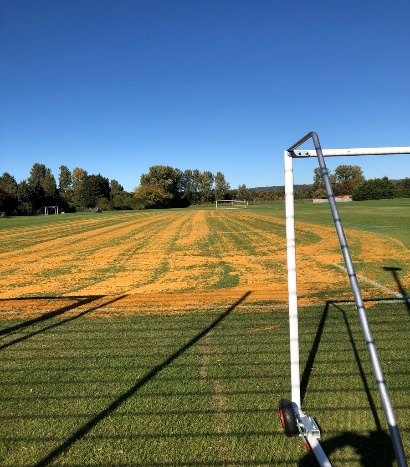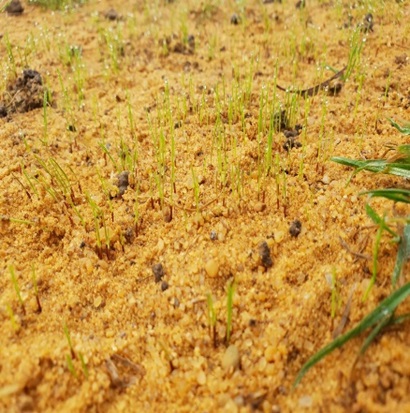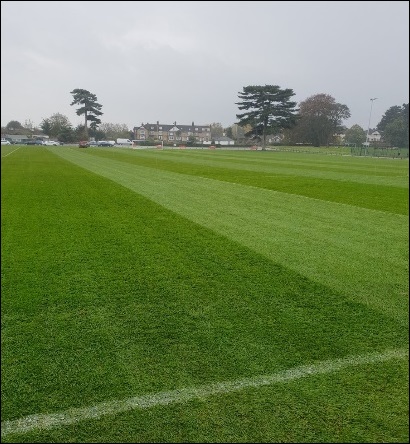
Pitch Perfect - Blog 8
Hello to the Grassroots Groundsman across Kent!
As we head into the final few weeks of the season we can reflect on all the hard work, dedication and commitment which has been put in by volunteer groundsman right across the County.
Despite all of our best efforts carrying out regular mowing, divot repairs, sand dressing, decompaction, line marking and general pitch maintenance the end is now in sight.
The end of the season is always a relief but it’s really just the beginning of the hard work for me and my team here at K Sports. We have been planning our renovations since January to ensure we use the best products for the best price, providing us with a positive outcome heading into next season. Most pitches will be wearing thin at this stage of the season and plans should be in place to make improvements during the summer.
One of the main issue’s local groundsman face, including ourselves is irrigation. If you are planning on renovating your pitches this summer, please consider conditions carefully, ensuring you have sufficient irrigation to warrant carrying out these works.
Renovation is one of the most important aspects of our job, ensuring we improve our pitch year on year. Like many of you, we have anywhere between 10-20 matches a weekend across our pitches here at K Sports and this takes its toll over the course of a season. Pitches need the appropriate maintenance so they can tolerate the excessive usage in all weathers.
Listed below are the key elements to a renovation:
Chemical Treatments
Ensuring your surface is weed free is important, particularly before over seeding and top dressing. This can be carried out by professional contractors if staff at the club don’t have the required certifications. Clearing weeds before top dressing and seeding helps to allow new growth to establish.
Scarification
Similar to the clearance of weeds, any thatch layer should be removed to the desired depth again helping new growth to establish.
Decompaction
Decompaction is one of the most important tasks for any groundsman. Ensuring the pitch is aerated regularly aids root development and reduces compaction. The most common form of aeration is verti draining (deep tining method) which has been spoken about in previous blogs.
Top Dressing
Sand to soil mixes are most commonly 70/30, 80/20 or even 50/50 in higher wear areas such as goal mouths. The quantity varies depending on budget but usually 40-80 tonnes per pitch is recommended depending on the state of your surface. The idea of top dressing is to improve surface levels and provide a cleaner more even playing surface which is divot free.
Overseeding
Overseeding can be achieved using a drill seeder or a disc spreader. Whichever option you decide, just ensure you use a desired ryegrass sports seed mix.
Fertilising
There are many options for fertilising and again some of these were discussed in the most recent blog. Your fertiliser applications should help to improve the overall density of your pitch, whilst strengthening the roots and encouraging further growth. Ideally though, a fertilising programme should be in use all year round to maintain the overall quality of the pitch. It is always advisable to have soil samples taken from your pitches, which when tested will help you and your supplier decide on the best fertiliser’s to be applied to your surfaces.
Irrigating
This is one of main reasons local clubs don’t risk spending heavily during the off season. Irrigation can be expensive but it is a must, and without it, I would seriously consider whether to carry out work to this extent. Last summer was very unforgiving and if we experience something similar this year, we will all be up against it.
Below are some pictures of our previous renovation works:
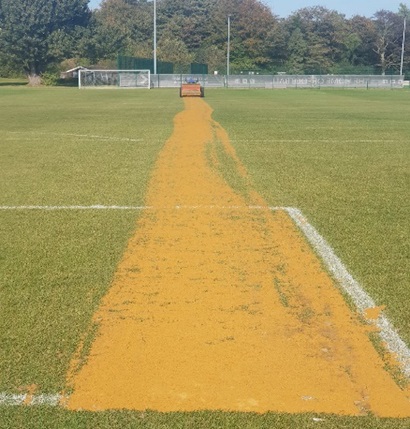
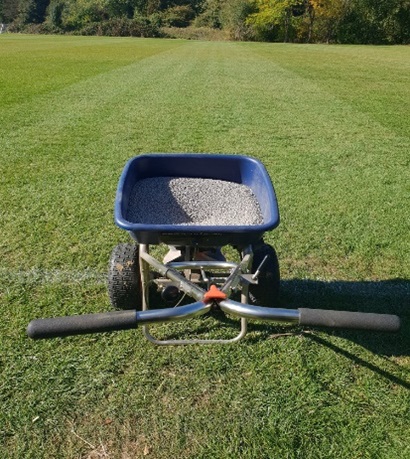
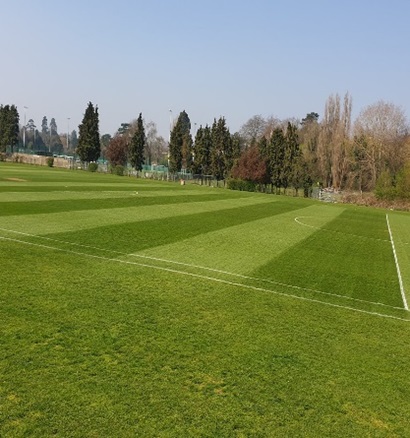
So after looking at potential options, what else can we do apart from full pitch renovations. As stated above, your budget will ultimately dictate how much work or how much money you can invest into your pitch. If budget constraints are a problem there are some other options, although maybe not as effective they are cheaper and run far less risk regardless of the end result.
Spot repairs can be carried out across your pitch, order some top dressing and seed and carry out your own repairs within the budget which is available to you. This will allow you to focus on the higher wear areas of your pitch and make improvements.
Over seeding is another option, certainly a cheaper option. However this does not improve the surface levels of the pitch and there are no guarantees results will be positive.
Lastly, resting your pitch. The idea of the summer months is to prepare your pitch for the following season. Hosting friendlies, tournaments and over using the pitch will only reduce the quality heading into the new season.
Best of luck to you all for the remaining weeks of the season and Happy Easter!
Scott Byers - April 2019


